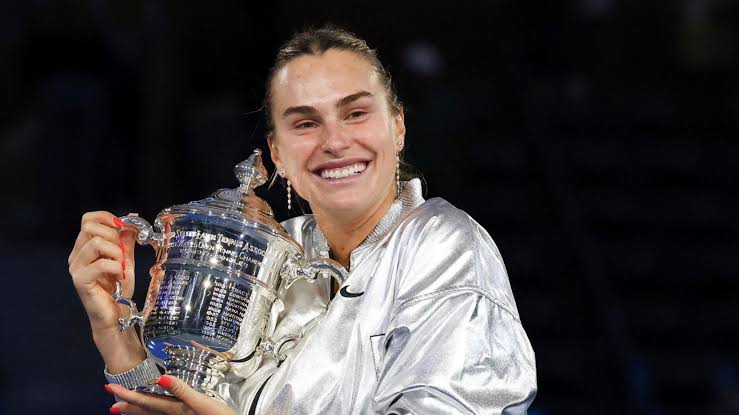Aryna Sabalenka etched her name into the annals of tennis history, securing her second consecutive US Open title with a hard-fought victory over Amanda Anisimova. The 6-4, 7-6(7-3) triumph at Flushing Meadows cemented Sabalenka’s status as the world’s number one player and marked the first successful defense of the US Open women’s singles title since Serena Williams achieved the feat in 2014. This victory also represented Sabalenka’s fourth Grand Slam title, all achieved on hard courts, adding to her two Australian Open crowns.
The match was a clash of resilience, with both players seeking redemption from past setbacks. Anisimova aimed to overcome the disappointment of her Wimbledon final defeat, while Sabalenka sought to rebound from agonizing losses at the Australian and French Opens, particularly the latter where a contentious press conference followed her defeat to Coco Gauff. Adding another layer to the narrative was their recent Wimbledon semifinal encounter, where Anisimova had emerged victorious, leaving Sabalenka in the unusual position of being the top-ranked player without a major title in 2025.
The first set unfolded with Sabalenka initially asserting her dominance, reminiscent of their Wimbledon clash. However, Anisimova, determined to avoid a repeat of that lopsided encounter, displayed remarkable courage and resilience. She unleashed powerful winners, finding the corners of the court and finally breaking Sabalenka’s serve to get on the scoreboard. This sparked a surge of momentum as Anisimova claimed three consecutive games, energizing the crowd with each successful shot. However, her game was a double-edged sword, marked by both powerful winners and unforced errors. Sabalenka capitalized on this inconsistency, reeling off four consecutive games to secure the first set. Anisimova struggled with the roof lighting impacting her ball toss, further hindering her ability to maintain consistent pressure.
The second set saw Anisimova’s frustrations boil over as Sabalenka secured another break in the third game. Despite fighting back to level the set, Anisimova’s serve continued to be a liability. Sabalenka capitalized on this weakness, forging ahead to a 5-3 lead and an opportunity to serve for the championship. The match, however, was far from over. In a dramatic turn of events, Anisimova produced a stunning backhand lob that Sabalenka netted, giving the American a lifeline and allowing her to level the set at 5-5. This was the moment where Sabalenka’s past demons could have resurfaced, but she displayed remarkable composure, steering the set into a tie-break, a format where she had been virtually unbeatable throughout the season.
In the tie-break, Sabalenka’s experience and dominance shone through. She capitalized on Anisimova’s accumulating unforced errors, ultimately sealing the victory with an unreturnable serve. The final tally of 29 unforced errors, including seven double faults, proved too much for Anisimova to overcome. While the defeat undoubtedly stung, the American could take solace in her remarkable ascent in the rankings, poised to enter the top four despite starting the year outside the top 30.
The victory sparked scenes of jubilation for Sabalenka. Falling to her knees after the final point, she quickly rose to celebrate with her team in the stands, expressing her gratitude for their unwavering support. Her post-match comments encapsulated her ambition and determination, stating her desire to reach many more finals and emphasizing the importance of her team’s presence, regardless of their location.
For Anisimova, the loss marked another heartbreaking final defeat, bringing her to tears following the Wimbledon drubbing two months prior. While acknowledging the positive trajectory of her summer, reaching two major finals, she admitted the difficulty of falling short twice in a row. Reflecting on the match, Anisimova revealed the significant challenges posed by the closed roof and the resulting lighting conditions. She explained that the glare created a whitewash effect, making it nearly impossible to see the ball on her serve throughout the match, a factor that ultimately proved insurmountable. This unexpected challenge severely disrupted her game plan and significantly hampered her ability to compete effectively, highlighting the unpredictable nature of professional tennis and the impact of external factors on performance.














